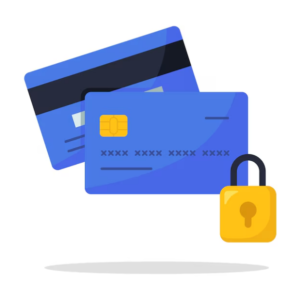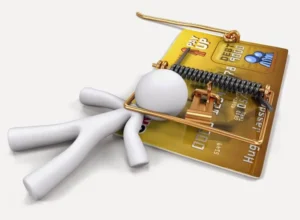The hidden costs of credit card interest in the U.S. (And how to lower your rates)
Credit cards provide financial flexibility, but they come with hidden costs that many consumers overlook. Interest rates on credit cards in the U.S. are among the highest of all lending options. If you’re carrying a balance, you could be paying far more than you expect.
Many people assume that by making minimum payments, they are effectively managing their debt. However, the reality is that interest accumulates daily, making repayment difficult. This daily compounding effect can turn a small balance into a long-term financial burden. Continue reading!
How credit card interest is calculated

Interest on credit cards isn’t as simple as applying a percentage to your balance. Lenders use an Annual Percentage Rate (APR) to determine borrowing costs. While the APR is quoted yearly, interest is actually calculated daily.
To determine daily interest, issuers divide your APR by 365. This daily rate is applied to your balance, increasing the amount you owe. The longer you carry a balance, the more interest accumulates, making debt harder to pay off.
For example, if you have a credit card with a 20% APR, your daily interest rate is about 0.055%. This might seem like a small percentage, but when compounded daily, it adds up quickly. Over time, interest can exceed the original amount borrowed.
Minimum payments are structured to keep you in debt longer. They often cover just enough to pay a portion of the interest, leaving the principal untouched. This is why many people struggle to see their balances decrease.
Additionally, missing payments leads to penalty APRs, which are much higher than standard rates. Some cards increase interest rates to 29% or more if you fail to make payments on time. This makes repayment even more challenging.
Understanding these calculations helps you make smarter financial choices. The more you know, the better equipped you are to avoid excessive interest charges. Knowledge is the key to breaking free from expensive debt cycles.
Strategies to reduce your credit card interest rates
If you’re stuck with high credit card interest, there are ways to lower your rates. The key is taking a proactive approach and exploring different strategies. Many people don’t realize they have options to reduce these costs.
One of the easiest methods is calling your credit card issuer and asking for a lower APR. If you have a strong payment history, issuers may be willing to negotiate. Credit card companies prefer keeping good customers rather than losing them to competitors.
When making this request, be prepared to explain why you deserve a lower rate. Highlight your track record of timely payments and your credit score. The better your financial profile, the higher your chances of securing a reduction.
Another effective approach is transferring your balance to a lower-interest credit card. Many issuers offer 0% APR introductory periods lasting from 12 to 18 months. This allows you to pay off your balance without accumulating additional interest.
Balance transfers can be an excellent tool, but they come with fees. Most issuers charge a percentage of the transferred balance, typically around 3-5%. Before making a transfer, calculate whether the savings outweigh the costs.
Debt consolidation loans can also help reduce credit card interest. These loans combine multiple debts into one with a lower interest rate. This simplifies payments and can lower overall interest expenses if managed correctly.
For those struggling with credit card debt, nonprofit credit counseling agencies offer assistance. These organizations can negotiate lower rates on your behalf. They also provide financial education to help you avoid future debt problems.
Long-term habits to avoid high credit card interest
Beyond reducing your current interest rates, it’s important to develop smart financial habits. Preventing future debt is just as important as tackling existing balances. The best way to avoid interest is to never carry a balance at all.
Paying off your full statement balance each month eliminates interest charges. Credit cards provide a grace period, meaning no interest applies if you pay in full. This strategy allows you to enjoy the benefits of credit without the extra costs.
If paying in full isn’t possible, focus on paying more than the minimum. Even small extra payments help reduce the principal balance faster. The less principal you owe, the less interest accrues over time.
Creating and sticking to a budget helps prevent excessive credit card spending. Many people accumulate debt because they spend beyond their means. A well-structured budget ensures you only charge what you can afford to repay.
Monitoring your credit score is also essential for securing better interest rates. Higher credit scores qualify you for lower APRs and better loan terms. Paying bills on time and maintaining low credit utilization improves your score.
Credit utilization refers to the percentage of your available credit that you’re using. Keeping this below 30% signals to lenders that you manage debt responsibly. A low utilization rate helps you qualify for the best credit offers.
Understanding promotional offers can prevent unexpected interest rate hikes. Many low-APR promotions expire after a certain period, increasing costs later. Always read the terms and know when introductory rates will end.
Setting up automatic payments ensures you never miss due dates. Late payments can trigger penalty APRs and harm your credit score. Automating at least the minimum payment prevents costly mistakes.
Another useful habit is reviewing your credit card statements regularly. Unexpected fees, fraudulent charges, or billing errors can go unnoticed. Catching these issues early prevents financial surprises.
Financial literacy plays a crucial role in avoiding high-interest debt. The more you educate yourself about credit, the better financial decisions you make. Continuous learning helps build strong money management skills.
Developing these habits leads to long-term financial stability. Avoiding unnecessary interest keeps more money in your pocket. Instead of letting credit card interest drain your finances, use credit wisely to your advantage.
By taking control of your spending, making strategic payments, and negotiating better terms, you can minimize interest costs. Credit cards don’t have to be a financial burden if used responsibly. Making informed choices today leads to a more secure future.
Graduated and master's student in History. Fanatic of books and series. Editor since 2023.




